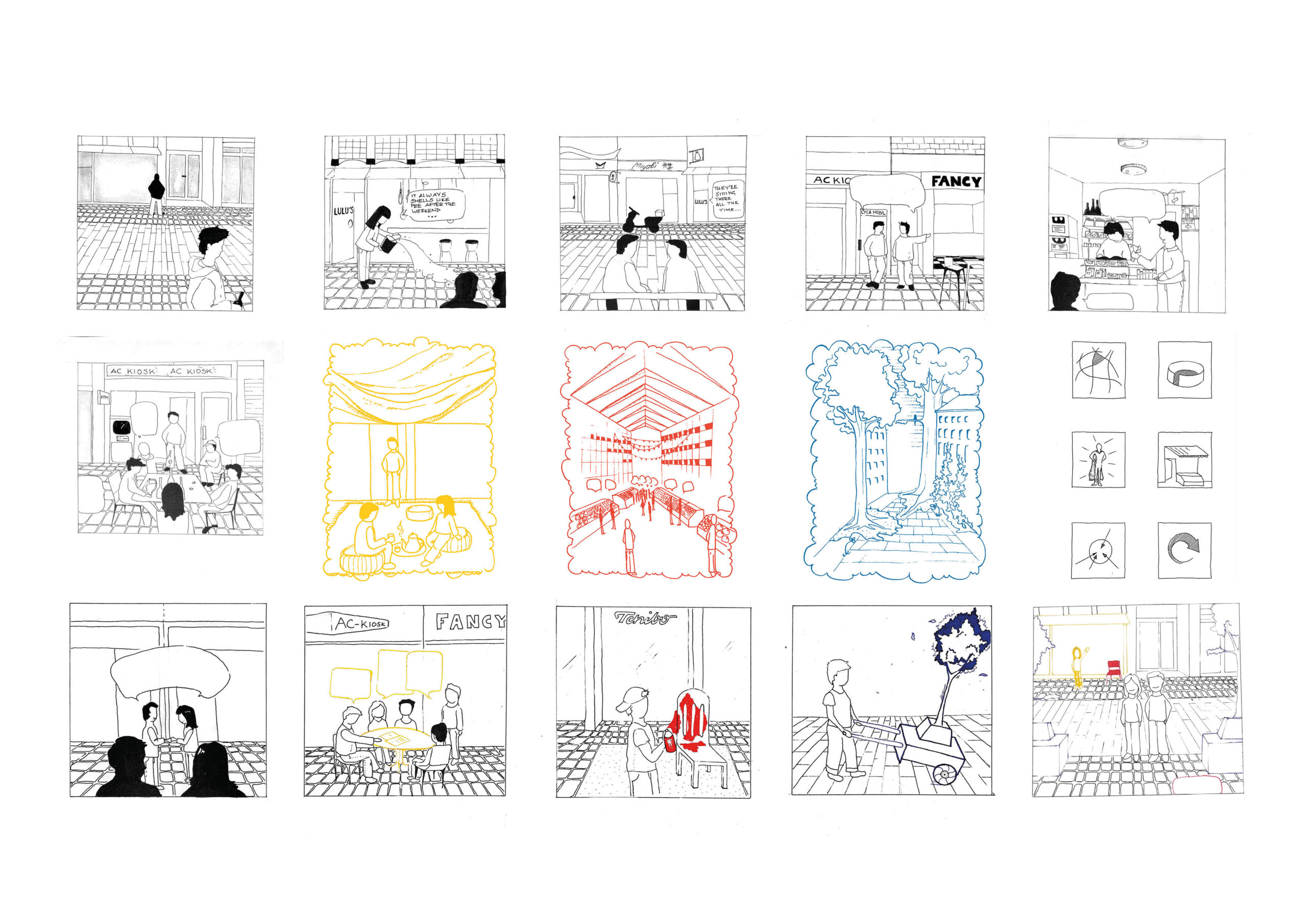
Was wäre, wenn…
Große Pläne für einen kleinen Ort
Big Plans for a Small Place
Das Projekt „was wäre, wenn“ ist im Rahmen der „ACademie für kollaborative Stadtentwicklung“ entstanden. Betreut wurde die Arbeit von Christina Jiménez Mattson, Prof. Jan Polívka und Prof. Agnes Förster. In ihrem Projektbericht rekapitulieren zwei Studierende die Entwicklung und Implementierung von drei Mikrointerventionen im innerstädtischen Raum.
Ausgehend von einem durch die Coronapandemie beschleunigten Wandel der Innenstädte, bei dem unter anderem ein verändertes Nutzungsverhalten und ein Rückgang des Einzelhandels zu beobachten sind, stehen die Stadtverwaltungen und Ladenbetreiber:innen vor großen Herausforderungen.
Die Erforschung der Aachener Innenstadt und die Dokumentation der dortigen Nutzungsmuster standen im Vordergrund des ersten Projektsemesters. Aufbauend darauf wurden aufeinander aufbauende Reallabore zur Erprobung der Reaktivierung eines Straßenabschnitts entwickelt. Die partizipative Arbeitsweise, die Aktivierung schlummernder Potenziale, sowie die synergetische Zusammenarbeit der beteiligten Akteure stehen im Vordergrund der Arbeit. Neben dem Projektverlauf werden die Fortentwicklung der Interventionen und die Erkenntnisse bezüglich der Kollaboration mit den beteiligten Akteur:innen zusammengefasst.
The project “was wäre, wenn” (“what if”) was developed within the framework of the “ACademie für kollaborative Stadtentwicklung”. The work was supervised by Christina Jiménez Mattson, Prof. Jan Polívka and Prof. Agnes Förster. In their project report, two students recapitulate the development and implementation of three micro-interventions in inner-city spaces.
Based on a change of the city centres accelerated by the corona pandemic, in which among other things a changed usage behaviour and a decline of the retail trade can be observed, the city administrations and store operators are facing great challenges.
The first semester of the project focused on researching Aachen’s city center and documenting the local usage patterns. Building on this, successive real life labs were developed to test the reactivation of a street section. The participatory approach, the activation of dormant potentials, as well as the synergetic cooperation of the involved actors are in the foreground of the work. In addition to the course of the project, the further development of the interventions and the findings regarding the collaboration with the actors involved are summarized.